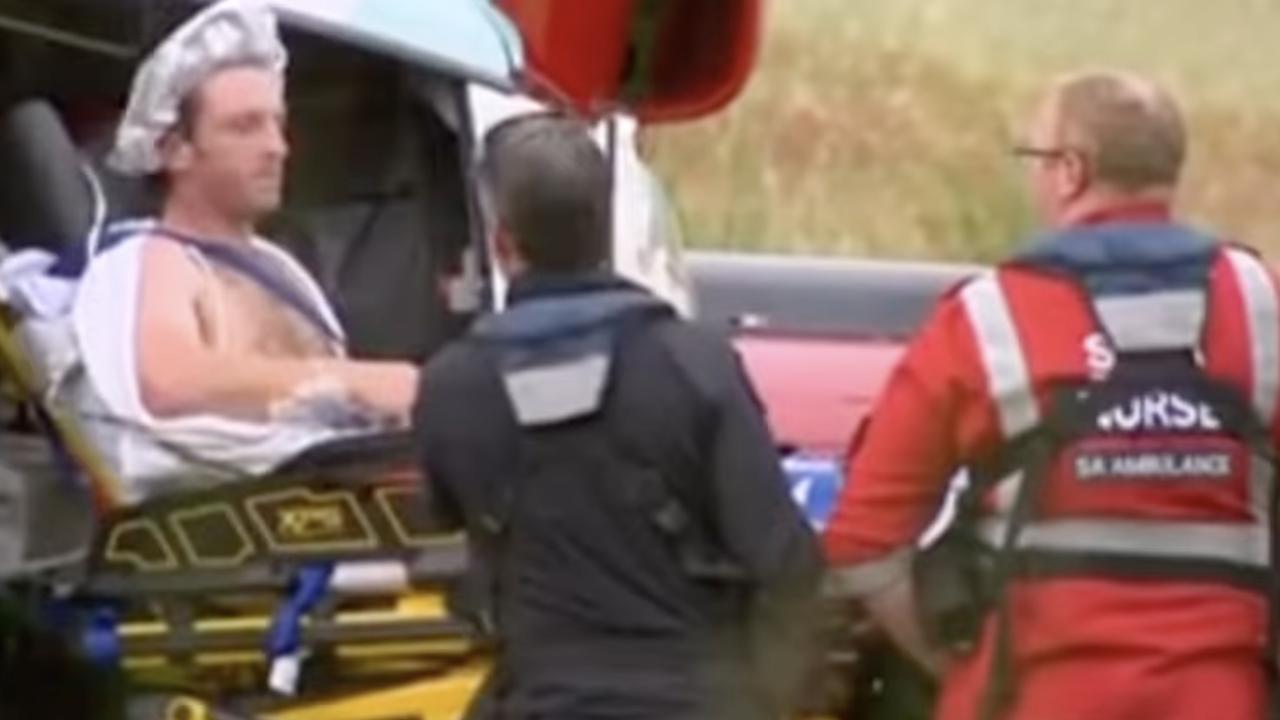Experts say it is ‘unlikely’ teenager Cameron Robbins was eaten by shark
Experts have cast doubt on the theory Cameron Robbins was eaten by a shark. So what did happen?

Grainy cellphone footage shows recent Louisiana graduate Cameron Robbins swimming in Bahamian waters at night, but as the camera pans left for a second he disappears — never to be seen again.
Some claim the video appears to show a shark closing in on the 18-year-old, but longtime scuba and marine search and rescue experts explain to The Post how several other outcomes need to be considered and explain why they think his body is yet to be recovered two weeks later.
Efforts by the coast guard from nearby Nassau and Robbins’ family were called off after two days when no trace of the teenager were found.
Wednesday will mark two weeks since Robbins, a high school athlete, disappeared, leaving his grieving family without answers.
“He was lost at sea after being reported missing off the coast of Athol Island in the Bahamas on the evening of May 24,” states a recent obituary honouring the beloved brother, son and grandson.

“Though he left this world far too soon, he lived a life full of good friends and family He was funny and kind-hearted, but also intense and driven.”
Was it a shark attack?
Robbins graduated from the University Lab School in Baton Rouge three days before he vanished in the “shark-infested” waters off Athol Island in the Bahamas.
He had leapt from Blackbeard’s Revenge, a pirate ship-style vessel, just moments earlier.
The haunting video footage shows Robbins swimming away from a rescue buoy as onlookers shout for him to grab the device.
The shadow of a mysterious being can be seen in the water just feet from where he swam.
Internet viewers speculated the object was a shark which pulled him under.
But experts largely reject the claim.
“We’ve consulted with oceanography and fisheries experts,” said Brian Trascher, vice president and spokesperson for the United Cajun Navy, a non-profit that has worked with the Robbins family. “They don’t believe … that he came in contact with any time of shark or predatory marine life.
“And until we get better video or something more conclusive, that’s going to be our position.”
Butch Hendrick, president and founder of public safety dive training company Lifeguard Systems, has spent decades familiarising himself with the Caribbean waters, including off the Bahamas.
“I don’t hear about a lot of shark attacks in the Bahamas,” he told The Post Friday.
He noted that boats such as the one Robbins and his classmates had been on, often serve food that is then dumped or spilled into the water, which can attract marine life, such as sharks.
Marine life, such as sharks, are “smart enough to realise that’s a boat that comes out all the time and it’s going to have food coming off,” Hendricks, who has developed rescue methods in 15 countries, told The Post.
But the behaviour of the object seen in the water with Robbins was not indicative of a shark.
“The tendency is not that [the shark] came in, took him, and took him to the depth,” Hendricks went on.

He noted the lack of any sign of blood in the water.
“They would hit him, that could be enough to totally incapacitate [him]. That could be enough to cause him to drown right there.”
Further, it’s unusual for a shark to actually finish eating a human it attacked, he noted.
“The tendency more often is to take a bite, shake and decide this isn’t what they wanted,” he said.
As for tiger sharks, which are known to swim in the waters off the Athol Island, “they can take a very large chunk,” Hendricks said.
“But the concept that they came back and ate more is slim.”
What did happen to Cameron Robbins?
Cristina Zenato, a longtime diver and Bahamas-based shark and ocean conservationist, told The Post she was not involved in the case at all, but suspected Robbins could have suffered hypothermia, then drowned.
“From what I saw, Cameron was wearing just shorts, and might have had a certain level of alcohol in his blood, which causes vasodilation,” she wrote in an email. “Chances are he didn’t survive hypothermia which contrary to popular belief can happen in matter of an hour or so, even in Caribbean waters.”
Hendricks, much like Zenato, questioned how much alcohol, if any, were in Robbins’ system at the time, and noted that could have contributed to the circumstances.
But Hendricks, whose rescue and recovery training company is one of the oldest in the nation, also wondered whether Robbins could have lost his breath after jumping from the boat.
“When he hits the water, does it simply knock the wind out of him and he can’t catch his breath?” he said.

“Knocking the wind out of himself when he hits the water is a very high possibility – now he’s struggling and he could sink.”
The current at the time would have likely also played a role, Hendricks said, as well as the possibility that Robbins could have hit his head during his descent.
“So, we don’t see the thrashing, we don’t see [blood]. A better chance that he just, he hits his head on the side of the boat or he gets the wind knocked out of him when he hits the water, he can’t catch his breath and then, in 60 seconds he’s leaving the surface.”
He called the chances Robbins could have swum to the safety of a shore “not impossible, but reasonably slim.”
Gone forever?
The US Coast Guard and Royal Bahamas Defense Force (RBDF) spent two days searching the waters for any sign of Robbins before suspending their efforts, as is their protocol if they cannot find any trace of an individual missing at sea.
Hendricks, no stranger to search and rescue procedures, said officials likely scoured the water surface for any evidence floating in the water.
Whether or not Robbins’ body sank after jumping from the boat, his remains likely would have floated – unless he suffered any wounds or punctures to his body during his time in the water.
“This happened well over a week and a half ago,” Hendricks said. “In that water temperature, he should have floated.”
In addition to the temperature and any injuries to the body, the water’s depth would also play a role in whether Robbins’ body resurfaced, Hendricks explained.
“It could very well mean the body is gone forever,” he said.
“It’s been too long for that temperature and for that depth, unless the water is very deep there – unless we’re talking water that’s greater than 100 feet,” he went on. “That body should have been up – unless it can’t float.”
Hendricks also noted the existence of a 200-foot underwater channel near where Robbins went into the water.
If the teen did drift into the channel, Hendricks said, “he’s not coming up.”
This story first appeared in the New York Post and was reproduced with permission.



